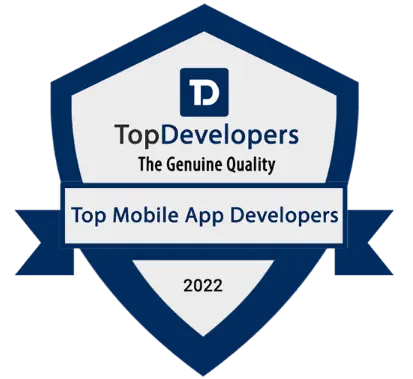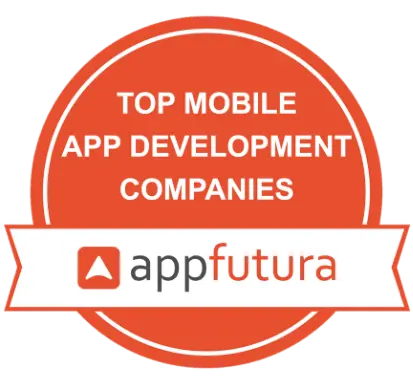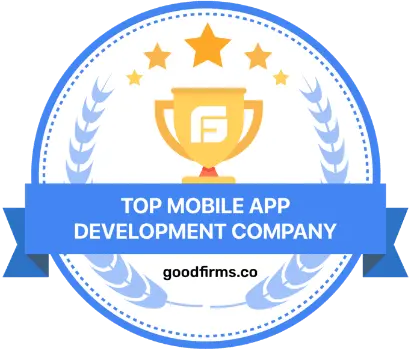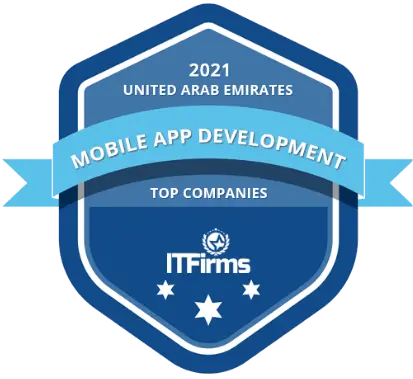2025 is set to be the year of eCommerce app development. From luxury splurges sealed on the couch to groceries delivered in minutes, digital storefronts have evolved from “just being there” to being 24×7 global sales engines!
By late 2025, mobile commerce is expected to generate $728 billion in the U.S. alone, making up 44% of all retail e-commerce revenue. Globally, the m-commerce market is expected to cross $2.5 trillion, while online retail sales are projected to hit the 8 million milestone by 2027, growing by 39%.
The eCommerce apps deliver three times more conversions than mobile browsers, thus making them the best choice for brands seeking better outcomes. By 2030, the eCommerce app development market could grow to between $3 trillion and $14 trillion!
The mobile-first mindset has fueled couch mentality, where shoppers browse, compare, and buy without ever getting up! A well-built eCommerce app is a must to meet these demands. It keeps your store open 24X7 on buyer devices, seamlessly combining designs, live stock updates, and one-stop checkout. Result? Each click drives conversions, and every purchase boosts your brand value.
Stay tuned to this guide to learn everything you need to launch a winning eCommerce app.
What is eCommerce App Development?
eCommerce app development refers to the process of designing, developing, deploying, and scaling a eCommerce mobile app to enable users to browse, shop, and transact for services or products online.
Unlike conventional online shopping, an eCommerce mobile app uses features like push notifications, GPS, cameras, AR, payment gateways, etc. to deliver a personalized and smooth shopping experience.
However, users now expect features such as AI-driven recommendations, one-tap payments, loyalty rewards, and instant checkout – all backed by unmatched security and performance.
Pro Tip – An eCommerce app built by a trusted eCommerce app development company is more than just a mobile storefront. It’s rather a full brand experience, tailored to encourage engagement, increase repeat customers, and gain useful data for your business.
Why Do Businesses Need eCommerce Mobile App Development in 2025?
- Consumer Preference: Around 76% of U.S. buyers now shop online through mobile. And this ratio will continue to rise!
- Competitive Market: The U.S. e-commerce industry will hit $1.7 trillion by 2027. You need a robust mobile eCommerce app to stay abreast.
- Consumer Loyalty: eCommerce apps generate 2–3x higher retention and repeat purchases compared to any mobile site.
- Quicker Time-to-Market: The best eCommerce app development company can speed up launch, slash costs, and supercharge quality.
- Personalized Experiences: Developing eCommerce mobile apps powered by AI is vital, as it enables unique offers, AR try-ons, and curated product feeds.
Types of E-commerce Applications
Thinking of making an investment in eCommerce app development? You might wonder which types of eCommerce app solutions are out there and which one is right for your business. Hence, knowing the different kinds of eCommerce application development is important. The right kind of app will shape the online shopping, setting your store’s vibe!
Here are the most popular types of eCommerce applications. Choose the one that best fits your target audience, business goals, and desired features.
1. Business-to-Consumer (B2C) E-commerce Apps
B2C eCommerce apps are the most popular options in the eCommerce industry. They let businesses sell directly to clients. When you buy something online, think of stores like Amazon, Walmart, or the Nike ecommerce mobile app. These apps are all about ensuring a seamless shopping experience for people, from helping them find what they want to making sure their checkout is secure.
Key Features:
- A vast selection of products and advanced filters for hassle-free browsing
- Secure payment gateways and one-click checkout
- Customer reviews, ratings, and wish lists
- Tracking purchases in real time
- Push notifications for sales and delivery updates
- Loyalty and rewards programs to get customer loyalty
Why Should You Pick B2C for Your Business?
This is the best way to reach more retail shoppers and boost conversions through your ecommerce app. With a direct connection, you may get personalized shopping experiences with AI-powered product recommendations and deals that are just right for you.
2. Business-to-Business (B2B) E-commerce Apps
A B2B e-commerce app links businesses with manufacturers, wholesalers, and distributors. Some of the best ones are ThomasNet, Alibaba, and Grainger. These apps are designed to be quick, have set prices, and work well with ERP software tools. They can handle a lot of business.
Key Features:
- Bulk ordering and inventory management
- Custom pricing lists and discounts for large purchases
- Multi-user roles such as buyers, managers, finance, etc.
- Workflows for quotes and requests for quotes (RFQs)
- Integration with back-end procurement or ERP systems
- Has capabilities for managing invoices and credit lines
Pro Tip: A reliable eCommerce app development company makes sure that the right tech stack is in place for growth and integration. This makes the whole process of buying digital.
3. Consumer-to-Consumer (C2C) E-commerce Apps
C2C eCommerce mobile apps like eBay, OLX, and Facebook Marketplace create a peer-to-peer network for individuals to buy and sell goods or services. This model helps small businesses thrive and makes secondary markets more active.
Key Features:
- User profiles and reputation systems (ratings and reviews)
- Easy product uploads and listing administration
- Built-in chat and negotiation tools
- Escrow/payment protection and dispute resolution
- Notifications in the app for chats and offers
Did you know?
C2C apps usually deliver user engagement since their user interfaces are intuitive and they have strict guidelines for moderation.
4. Consumer-to-Business (C2B) E-commerce Apps
In this model, individuals (such as freelancers and influencers) provide goods or services to businesses. Some of the most popular sites are Upwork, Fiverr, and platforms that help you market yourself as an influencer.
Key Features:
- Service listing/search and application workflows
- Portfolio and customer review management
- Safe contract and payment systems
- Bidding and proposal management
Best for: businesses that need creative workers, consultants, or those who offer digital services. It’s important to have a range of ecosystems for eCommerce mobile app development.
Sell Smarter, Grow Faster!
Create Your Own eCommerce App with Cutting-edge Features.
5. Mobile-Only Commerce Apps (M-commerce)
Mobile devices can only use m-commerce apps. These apps use features that are only available on mobile devices that include GPS, cameras, and push notifications. Wish, SHEIN, and TikTok Shop are a few popular examples. These eCommerce mobile app development projects often emphasize speed, social shopping, and better customization.
Key Features:
- One-tap purchases on mobile devices (Apple Pay, Google Pay)
- Deep integration with social media platforms
- Shop live and try on AR/VR products
- Search by voice and get better ideas
- Highly optimized eCommerce mobile app development for rapid load times
Fact: By 2025, mobile commerce (m-commerce) will be worth more than $2.5 trillion around the world. This is one more reason why mobile-first solutions should be the top priority for all e-commerce businesses.
6. Subscription-Based E-commerce Apps
The popularity of these particular e-commerce apps is soaring sky-high! These apps bring ease in recurring purchases (think Netflix, Dollar Shave Club, or Blue Apron). All these are aimed at offering convenience and ensuring retention.
Key Features:
- Recurring billing and subscription management
- Flexible subscription options, including pause, skip, change frequency, etc.
- Fully customized product suggestions or content feeds
- Customer analytics to predict churn and preferences
7. On-Demand eCommerce Apps
This category includes apps like Uber Eats, Instacart, and Drizly, which facilitate instant purchasing and real-time fulfillment. To support geolocation, scheduling, and logistics tracking, on-demand models need robust mobile app development.
Key Features:
- Track orders and get ETA updates in real time
- Maps and location-based search are included in
- Scheduled deliveries or pickups
- Instant payments and in-app tipping
Choose the Right eCommerce App Development Approach
To make your eCommerce app development process a success, you must focus on your business model, user behavior, competitor analysis, and market research insights. The best eCommerce platform will value your long-term visions and your team bandwidth.
Trust an eCommerce app development company that is well aware of – current technology, industry-best UI/UX practices, and trends in eCommerce mobile app development.
Step‑By‑Step Process of eCommerce Mobile App Development
The eCommerce application development process gets less complex when you follow the straightforward yet effective steps. Each process should be followed properly, as rushing or skipping an important step can affect your app’s performance. The below-mentioned
eCommerce app development process covers every crucial stage, from ideation to creation and final launch. Have a glance –
Phase 1: Discovery and Market Analysis
The success of an ecommerce app development project depends on its root – in-depth market research. This is where you test your eCommerce app idea and check whether it’s truly viable.
- Conduct Market Research: Start by analyzing the competitors thoroughly. Identify the booming trends in your intended industry. Invest time in studying user behavior like when, why, and how your target audience makes online purchases on their mobile devices.
- Define your Business Model: Time to decide what kind of ecommerce mobile app you need. There are many options like B2C, B2B, C2C, marketplace, or subscription-based, to pick from.
- Assess User Preferences: Your users’ satisfaction should be your ultimate success. So, gain an understanding of which features your target shoppers expect from an e commerce app (for example, AR try-ons, real-time tracking, one-click payments, etc.
- SWOT Analysis: Time for a quick anatomy of your online business – its strengths, drawbacks, opportunities, and challenges.
- Benchmarking: Research the mobile apps that work best in your intended vertical. Check their perks, pain points, or honest user feedback in the app stores.
Phase 2: Ideation and Requirements Gathering
This phase is all about turning your ideation into action.
- Define All the Features: Start by curating a list of the most basic features for your app (for example search, catalogue, payment, etc.). Then, gradually add on the cutting-edge ones like push notifications, AI recommendations, social login, etc.
- Document Requirements: The next step is to detail out all your functional, non-functional, and technical requirements. The tech requirement should cover integrations (like payment gateways, analytics, logistics, etc.).
- Finalize the Platform: Decide on the right platform – such as Android, iOS or hybrid – for your eCommerce mobile app development.
- Choose the Right Tech Stack: Technology is the heartbeat of a successful mobile eCommerce app! Invest ample time in choosing the right frameworks, databases, cloud services, or programming languages. The tech stack you choose should yield performance, scalability, and security.
Phase 3: Planning and Architecture
This phase is transformative, as it converts your visions into actionable plans and technical blueprints.
- Map User Journeys:Visualize each interaction like product discovery, onboarding, checkout, consumer support, and the likes.
- Wireframes and User Interface: Build your e commerce app’s skeleton by mapping screens and user flows. This is to bring better clarity to the process.
- System Architecture: Design both backend and frontend frameworks. Furthermore, choose databases and set up scalable infrastructure.
- Define the Milestones: A project roadmap is essential to guide your app development company or team. Don’t forget to add clear sprints and deliverables to the roadmap.
Phase 4: UI/UX Creation
The captivating and customer retention capabilities of your ecommerce app depend heavily on this phase.
- High-fidelity Prototypes: Convert wireframes into clickable prototypes by simulating the full user interface.
- Design for Mobile Commerce: Let ease of use be your top priority! Crack the deal with clear CTAs, thumb-friendly navigation, mobile-responsive layouts, and fast loading.
- Onboarding Flows: Streamline the first-time setup besides personalizing the initial experiences.
- Visual Hierarchy: To encourage user actions and maximize conversions, make use of the right color, typography, and layouts.
- Accessibility: Bring accessibility to your app by including readable fonts, contrast, alt text for images, etc.
- Usability Testing: Glean transparent user reviews on the prototype. Iterate before the coding begins.
Phase 5: Frontend and Backend Development
This is the stage when the ecommerce mobile app development of your dream becomes a reality.
- Frontend Development: Create the visible parts like buttons, screens, animations, etc., of your e-commerce app. This is an application for creating both iOS and Android apps, or even hybrid platforms.
- Backend Development: This involves server logic creation, database management, inventory tracking, API integrations, order processing, and user authentication.
- Incorporate Key Features: Add core modules such as catalog, search, filter, checkout, user accounts, shopping cart, push notifications, loyalty programs, order tracking, and the like!
- Integrations: Link with CRM, payment processors, shipping partners, and social media platforms.
Phase 6: QA and Testing
This stage is all about conducting thorough and rigorous testing to free the ecommerce app development process of bugs, glitches, and other quality-threatening issues.
- Functional Testing: This is important to check each feature, interaction, and user flow for bugs.
- Performance Testing: It’s about carrying out a stress test under heavy loads to ensure that the apps run fast without draining the battery.
- Security Testing: Securing payment and user data with secure protocols and strong encryption.
- Cross Platform Device Testing: This test ensures a seamless operation across all screen sizes, hardware profiles, and OS versions.
- User Acceptance Testing (UAT): It’s important to hire real users to provide honest feedback, thereby identifying the real-world issues.
Phase 7: App Store Deployment and Final Launch
- App Stores Preparation: App store preparation includes asset generation (icons, screenshots), crafting compelling descriptions, and setting up developer accounts for the Google Play store and Apple App Store.
- Submission and Review: This process is necessary to check if your app is compliant with essential guidelines and capable of fixing rejections and staying compliant with payment or privacy regulations.
- Launch Strategy: Every eCommerce app development company should coordinate marketing, social media, and PR to guarantee a strong debut.
- Backend Readiness: Must check servers, APIs, and integrations to ensure everything runs seamlessly as your app scales.
Phase 8: Support After the Final Launch
You’re wrong if you think the eCommerce application development process ends with launching. It’s actually the starting point of the lifecycle!
- Post-launch Support: Post-launch support should ideally cover timely updates for bugs, adding user-requested features, and releasing new OS.
- Analytics Tracking: Developers leverage dashboards to track user engagement, customer retention ratio, drop-off points, and conversion rates.
- Gather user feedback: It’s important to gather in-app reviews, conduct surveys, and thoroughly analyze user support queries.
- Scale Infrastructure: As your user base starts to grow, you must upgrade backend servers, include new integrations, and boost data security.
Phase 9: Marketing, Growth, and User Retention
A top-trusted ecommerce mobile app always emphasizes a strong strategy for long-term and consistent growth – not just a rushed launch!
- App Store Optimization (ASO): This process is about optimizing titles, visuals, and keywords to maximize discoverability in app stores.
- Referral Programs: Persuade your users to share through incentives, and thus grow your audience base.
- Push Notifications: It revolves around crafting timely, personalized, and non-intrusive alerts to maximize re-engagement.
- Loyalty and Rewards: This is for making the shopping experience fun, rewarding loyal customers, and increasing repeat buys.
- Social Media Integration: Enable your users to share wishlists, purchases, and offers on their social media accounts with ease. This will encourage more people to install your app.
Must‑Have Features for Your eCommerce Mobile App Development
What does actually set a high-performing eCommerce mobile app apart from its competitors? Primarily its features and functionalities! There are many robust features out there, but you should only consider the ones that align with your business goals and user needs. To reap the utmost dividends of ecommerce mobile app development, take these features into account!
Essential Features for Every eCommerce Mobile App
- User Registration / Login: It allows consumers to sign up via phone, email or different social media platforms. Single sign-on always makes signup a lot quicker and boosts conversions.
- Product Catalogue with Search and Filters: This feature covers comprehensive product catalogues with smart filters, search, and sorting options. It helps users quickly find exactly what they are looking for.
- High-Quality Product Visuals: Product images and demo videos showcase each angle, feature, and perk properly. To enhance the mobile shopping experience, 360° view, swipe galleries, and Zoom are essential.
- Add to Cart and Wishlist: A single-tap “Add to Cart” is non-negotiable for hassle-free shopping! Wishlists let users save products for future purchase and re-engage with them later with special offers.
- Secure Checkout and Payment Gateway Integration: This is to accept debit or credit cards, digital wallets, and one-tap payments. Furthermore, PCI DSS compliance is vital to earn user trust and guarantee customer satisfaction.
- Order Monitoring and Shopping History: This feature enables users to track order status and shipment, besides getting access to their full purchase history. It reduces support requests and unnecessary tension.
- Push Notifications: Send real-time alerts to confirm orders, and share updates on shipping, cart abandonment, and flash deals. Personalized notifications help in boosting user engagement and repeat visits.
- Customer Ratings and Reviews: This is essential to enable customers to share feedback and go through authentic reviews. It helps in building transparency and social proof for your e commerce app.
- Return and Refund Management: It’s to ensure simple and clear flows for returns and refunds. This encourages your users to try your app.
- Customer Support and Chat Integration: In-app chats like, live, hybrid, or chatbots provide instant help, share order updates, and resolve product queries. A sure-fire way to boost user loyalty!
Try Out the Advanced Features to Boost Conversion and Loyalty
- Personalized Shopping Experiences: AI/ML-powered recommendations help in suggesting products depending on user preferences and behavior, thus boosting customer satisfaction and basket size.
- Augmented Reality (AR) Try-Ons: Another robust future that enables users to “try before they buy” – virtually! This reduces returns and boosts confidence.
- Social Commerce Integration: This one enables users to directly shop through social media platforms. They can also easily join live shopping streams or share their shopping wishlists with friends.
- Voice Search and Natural Language Interface: This robust feature enables hands-free searching and product discovery. It caters to better accessibility and the emergence of voice assistants.
- Multi-Vendor Marketplace Support: If you deal with multiple sellers, then consider adding vendor dashboards, managing commissions, and supporting multi-store browsing.
- Loyalty Programs and Gamification: Reward points, check-ins, perks, and games help in winning customer loyalty and bringing them back – over and over again!
- Multi-Currency, Multi-Language and Global Shipping: This edgy feature lets users shop in their language, pay in their currency, and get exciting local deals.
How Much Does eCommerce App Development Cost – Complete Breakdown
The development cost of developing eCommerce mobile apps could vary based on what you need. A number of factors and components come into play to determine the total eCommerce app development cost. Here’s a detailed eCommerce app development cost breakdown to help you budget realistically.
A Quick eCommerce App Development Cost Breakdown Table
| Development Phase | Typical Cost Range (USD) | Highlights |
|---|---|---|
| Discovery and Research | $2,000 – $10,000 | Market research, requirement gathering, etc. |
| UI/UX Design | $5,000 – $30,000 | Wireframes, prototypes, and design |
| Front‑end & Back‑end Development | $20,000 – $150,000+ | Coding features, integrations, etc. |
| Testing and QA | $5,000 – $30,000 | Functional, performance, security testing, etc. |
| Deployment and App Launch | $3,000 – $15,000 | App Store/Play Store submission and setup |
| Maintenance (annual) | 15‑20% of the initial cost | Updates, bug fixes, and infrastructure |
Explaining the Crucial Cost Components
- Discovery and Research: Basic research can be run with simple resources. But if it involves assessing eCommerce app ideas, user types, and tech stacks will increase the costs.
- UI/UX Design: If you want unique designs or mobile-first optimization, be ready to invest more! To save your money, you may use templates.
- Development: This could make your budget blast off! Especially if you want to build for both Android and iOS. The mobile app development costs could also shoot up if you want advanced features such as AI, AR, multi-vendor support, etc. To simplify, the expense could be around $40,000 for basic apps and it could exceed $400,000 for developing eCommerce mobile apps.
- Testing and QA: Testing usually takes about 15–20% of the overall budget. If you want to ensure your eCommerce app runs smoothly across devices, you might have to shell out extra!
- Maintenance and Constant Updates: Post the launch, you should focus on tracking analytics, fixing bugs, updating for new OS versions, and adding new features. Yearly maintenance typically costs 15–20% of the initial pricing.
Pro Tip: Launch your eCommerce mobile app as a simple MVP, test it thoroughly with real users, and add cutting-edge features later. Result? It will save you from blowing up your budget.
How The NineHertz Can Help You With eCommerce Mobile App Development
To develop an eCommerce app or level up your mobile experience, trust The NineHertz, your trusted creative, marketing, and tech transformation partner. Over the years, we have wrestled our way into the spotlight by delivering strategy, quality, and innovation!
What Makes Us A Number-One Choice – Not Just an Option?
- We’re a full-service mobile app development company specializing in eCommerce app development for both startups and big enterprises alike.
- A track record of delivering end‑to‑end solutions is what we’re proud of. We cover everything – from conceptualization and wireframing to launch and support.
- To build a top-quality eCommerce application, we focus on mobile‑first UX, secure payment integrations, and performance optimization.
- Our expertise in working across iOS, Android, hybrid frameworks, and cross‑platforms gives us an edge! We never compromise on quality, and hence we choose the top-tier tech stack.
- To make sure that your eCommerce app keeps evolving even after launch, we provide ongoing support, maintenance, and analytics‑driven iteration.
Over the past 15 years, The NineHertz has solidified its reputation for delivering cost-effective eCommerce innovation by combining technical precision with a deep understanding of today’s evolving eCommerce industry.
This makes us the right choice for developing smart, secure, and high-performing e-solutions that truly transform your retail success.
Conclusion
In 2025, eCommerce App Development is non-negotiable! It’s essential to help your e-venture thrive in today’s mobile-first and always-on world. Brands that move fast, build smart, and maintain their eCommerce apps diligently will eventually outperform those who treat mobile just as an afterthought.
Backed by the right approach and most importantly a reliable development team or partner, you can step up your eCommerce journey. Only the right experts can help you drive engagement, get repeat purchases, achieve business growth, and maximize your global reach.
Your digital storefront is way more than just a channel. It’s the catalyst for your long-term business growth and continued success!
FAQs
1. What is the best tech stack for e‑commerce mobile app development?
The idealness of your tech stack depends on the platforms you intend to reach and their required performance. Swift for iOS and Kotlin for Android are the most outstanding languages, as they help apps run seamlessly on their own. There are two cross-platform tools: React Native and Flutter. You might use a database like PostgreSQL or MongoDB with Node.js, Ruby on Rails, or .NET on the back end. Choose a stack that has all the features, speed, and long-term maintenance you need.
2. What are some popular e‑commerce application development trends?
Some of the most prominent trends are AI-powered product suggestions, AR/VR try-ons, social commerce (shopping through live streams or social media), voice search, enhanced analytics for personalization, and subscription-based commerce models.
3. How long should it take to build an e‑commerce app?
It can take 3–4 months to make a basic MVP. It could take 6 to 9 months to build a moderately complex program that works on common platforms and has standard features. For fully functional mobile app development with robust features and integrations, the overall development process might take 12 months or even more!
4. What are the best tips for e‑commerce app development?
Think mobile-first: make sure the speed, load time, and ease of use are all good.
- Make sure you put the most important features first, then add more complex ones in later versions.
- Always trust an eCommerce app development company that has already handled similar projects.
- Keep in mind that your eCommerce app should load in less than three seconds, have few errors, and offer an easy checkout process.
- Focus on improving things by using analytics and user input to make adjustments.
- Ensure that your tech stack can scale and evolve with new users and how they use it.
Great Together!










